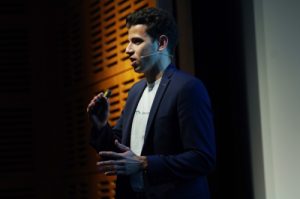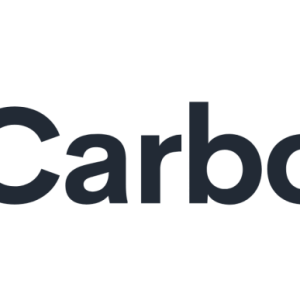
Carbon Glance is accelerating the transition to a low carbon economy by helping businesses understand the costs associated with their greenhouse gas emissions. We spoke to founder Victor Perez about the challenges of using data to drive climate change solutions, and how the University of Edinburgh and the Venture Builder Incubator have helped the startup grow

My background is a combination of law, finance and economics applied to the field of climate change and sustainability. I explore the intersections between these areas and how they can be applied to solve complex climate-related issues.
I became interested in carbon pricing and after finishing my Master’s dissertation at the University of Edinburgh, I won a business competition with an idea in that space. Back then it was still just a concept, but through the Venture Builder Incubator we set up the foundations of Carbon Glance. By the time we graduated from the incubator it was a real company with an incredible team.
Carbon Glance was created to accelerate the transition to a low carbon economy, and we aim to do that by helping companies and financial institutions assess the costs associated with their greenhouse gas emissions. The main challenge lies in translating emissions data into costs, a language that is understandable to both companies and financial institutions. Of course, this translation cannot occur arbitrarily, it needs to be driven by an underlying model that considers, among other factors, the policy landscape, the specific sector and industry, or the ability of companies to pass on the cost of carbon across their supply chain. This is why we always say that Carbon Glance goes beyond carbon accounting, because we equip sustainability teams with the ability to integrate more than just emissions data into their decision-making processes.
Being able to drive change is what makes the entrepreneurial journey fascinating to me. I'm excited about what I do and I love that, from my position as an entrepreneur, I can generate a real and positive impact on the world.
First and foremost, we’ve set up the foundations of the startup, which for me is a huge success. We also pitched at a demo day at the Scottish National Gallery, which was a great opportunity to come together as a team and practice pitching to bigger audiences – in fact, that was the first time we met in person. During the incubator, we were selected as one of the 15 Most Promising European Startups due to what we were able to achieve during the incubator.
Data is a crucial pillar of our company. We want to accelerate decarbonisation through the use of data.
Our platform is built with data and analytics from many sources and we need a combination of skills to translate this for our clients and team – not only people with expertise and knowledge in climate-related issues, but also those who are knowledgeable about data science and accelerating the transition to a low carbon economy in an accessible way. These people are not always easy to find!
The Venture Builder Incubator opened new doors within the university. Before joining the incubator, I didn’t know how much support the university offers to entrepreneurial students. I was pleasantly surprised by the ecosystem that exists. I made a lot of new connections through the incubator, gained new knowledge and skills, and learned how to build and run a business from experts and peers.
We are continuing work on our product and are further validating the market fit. In addition, as part of our selection as one of the 15 Most Promising European Startups, we’ll be pitching at the EU Startup Summit in April 2023 in Barcelona, which will be a great opportunity for us to attract new clients and stakeholders. We're really looking forward to that.

Want to learn more about Carbon Glance, click below to head to their website.